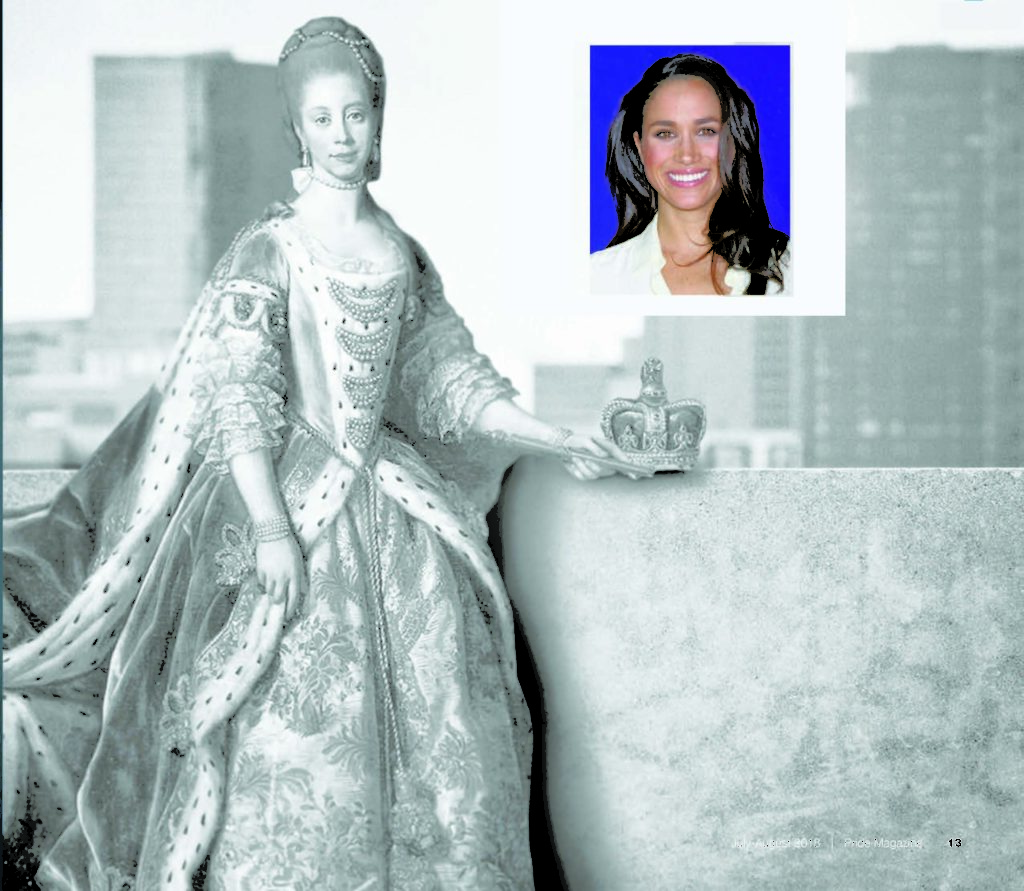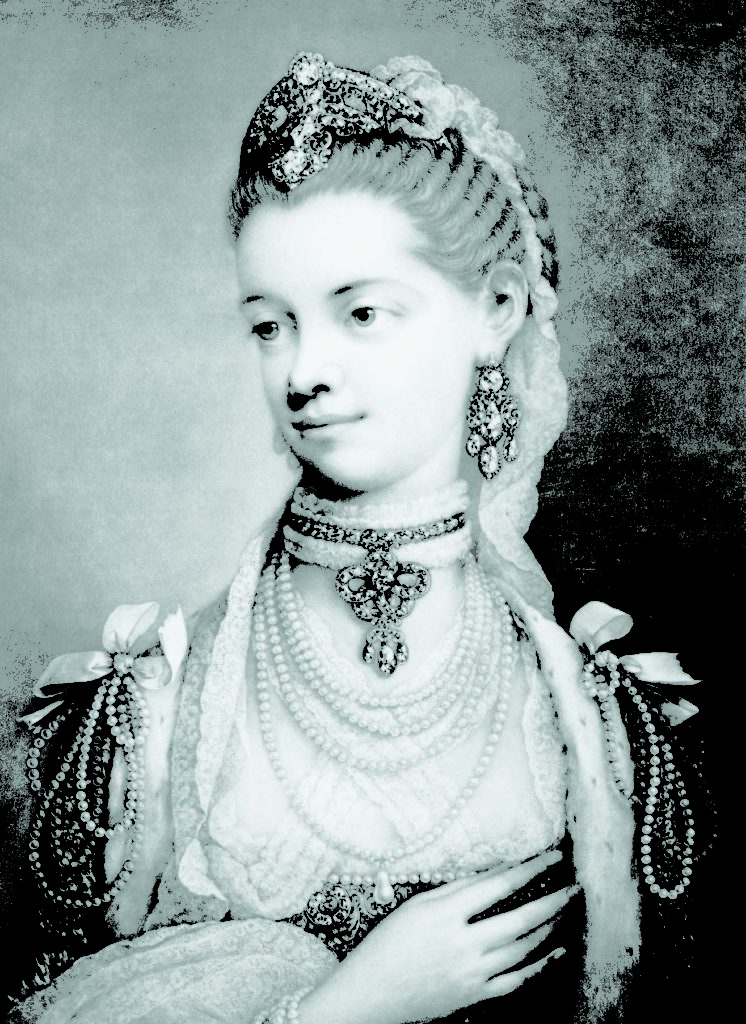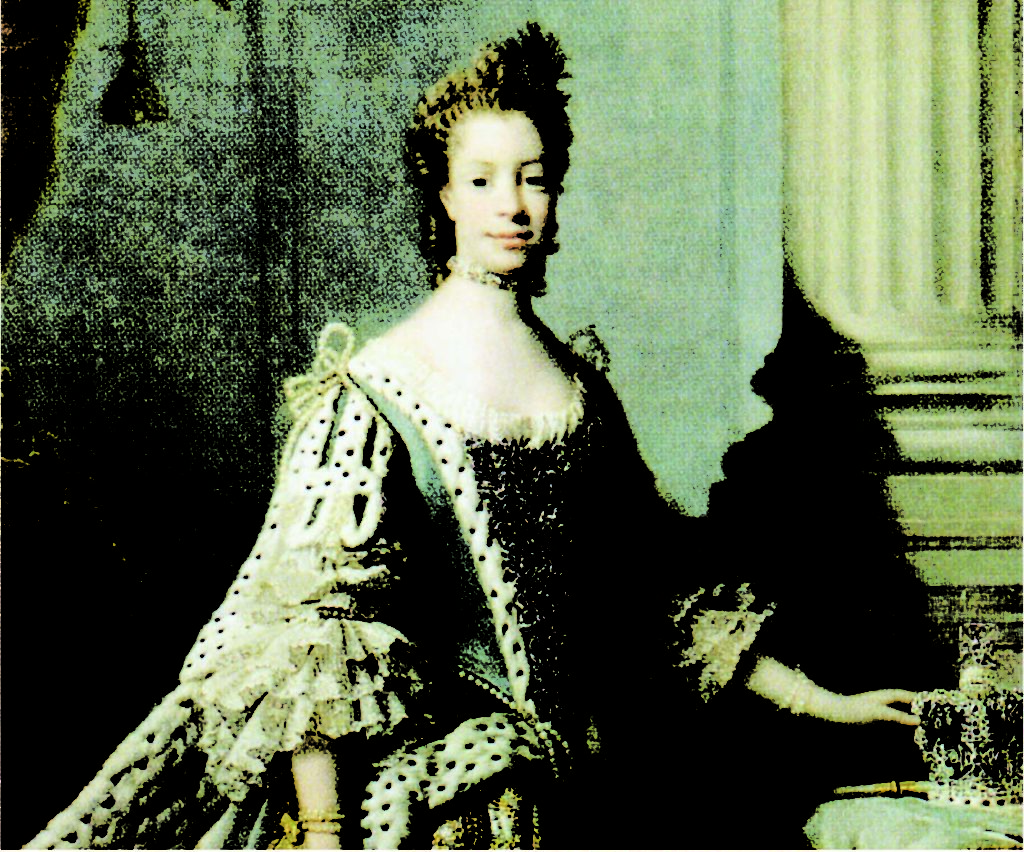
By Tonya Jameson
In May, millions of people around the world were swept up in the fairy-tale wedding of Prince Harry and Meghan Markle. Their magical romance reminded us of the beauty of young love. Their nuptials held an even more special meaning for African Americans, as we
watched the biracial Markle marry into the royal family. Black Twitter buzzed as we celebrated the Duke and Duchess of Sussex unapologetically incorporating elements of Black culture into the wedding on an international stage. At a time when it seems America is more divided over race, the wedding reinforced the importance of positive representations of people of color.
The excitement over Markle sparked conversations about the significance of a Black woman marrying into the royal family, but it also sparked another conversation about history and firsts. While some consider Markle to be the first African American to marry into the royal family, the city of Charlotte’s namesake, Queen Sophia Charlotte of Mecklenburg-Strelitz, was the first woman of color to marry into the royal family. Queen Charlotte, of Moor ancestry and German roots, was married to King George III, who ruled England during the American Revolution, more than 250 years ago. Markle’s biracial heritage is cause for celebration, or at least complimentary acknowledgement. Queen Charlotte did not enjoy that type of sentiment. Her mixed ancestry was often downplayed or criticized in descriptions of her physical appearance, which made reference to such things as the width of her nose. Author Stephanie Myers, based in Washington, D.C., said research shows the current royal family is descended from Queen Charlotte’s granddaughter, Queen Victoria. Myers visited the city of Charlotte earlier this year to discuss her 2016 book, “The Invisible Queen,” which chronicles the life of Queen Charlotte and details her contributions to the world. Charlotte is one of about 20 places throughout the world that pay homage to the queen by incorporating her name into the city’s name, from Charlottesville, Virginia to Charlotte, N.Y. The city of Charlotte recognize
1700s, and that’s where Queen Charlotte was raised as a child. In the mid-1700s, the royal family in England began searching Europe for a wife for King George III, then age 22. Charlotte’s name surfaced, and the royal family sent an emissary to Germany to meet her.
At age 17, she sailed from Germany to England to meet and marry King George III. She was Queen of England and Ireland for 57 years. She was a mother of 15 (two died as infants). She supported the abolitionist movement. She was a caregiver, diplomat, philanthropist, musician and more. Queen Charlotte extended her generosity to an eight-year-old Wolfgang Amadeus Mozart, and even sang an aria with him when he visited England. He dedicated Opus 3 to her. She took care of King George as he struggled with what has been described historically as mental illness and/or porphyria, which causes abdominal pain, mental illness and even paralysis. He would later be called “Mad King George,” and was the subject of a 1994 movie, “The Madness of King George.” His attacks occurred without warning, and often required the king to be confined to his quarters. Queen Charlotte acted as his caregiver and managed his duties as king. At one point, their eldest son, King George IV, Prince of Wales, petitioned parliament to challenge his father’s fitness to rule the monarchy. Queen Charlotte fought her son’s power grab. Myers admires Queen Charlotte’s confidence and strength. She said the recent royal wedding paid tribute to Queen Charlotte in numerous ways. The wedding was held in St. George’s chapel, which was one of Queen Charlotte’s favorite places,
Myers said. Prince Harry and Markle asked that in lieu of gifts, money be given to their favorite charities, which support causes that address women’s empowerment, conservation, the environment, homelessness, HIV and the armed forces.
It’s a gesture that Queen Charlotte would have appreciated. She was a huge philanthropist, and a lover of science and botany, and she supported indigent women of all ages and circumstances. She gave money to finance maternity hospitals for unmarried pregnant women, homes for elderly, homeless women and an embroidery school for indigent girls, Myers wrote. Then there’s the young Black cellist Sheku Kanneh-Mason taking stage in front of the entire world during the recent royal wedding. Queen Charlotte invited young, Black violin prodigy George Bridgetower (of African and Polish parents) to perform at Windsor Castle in the late 1770s, Myers wrote. “There’s a page that has been turned,” Myers said. “I feel there was a real moment here. I believe the royal family will open up. Royal families all over the world will open up. Our community brings a lot to the table.” For a few hours in May, elements of our culture melted hearts throughout the world. Bishop Michael Curry’s fiery sermon could’ve been snatched from the pulpit of any Black church. The Kingdom Choir’s rendition of “Stand by Me” wasn’t a gospel song, but it definitely tugged at the soul, as gospel choirs are known to do. This was a chance for African Americans to bask in our culture in a way that we haven’t since the Obamas left the White House. It was the royal family’s wedding, but it was Black America’s moment.



